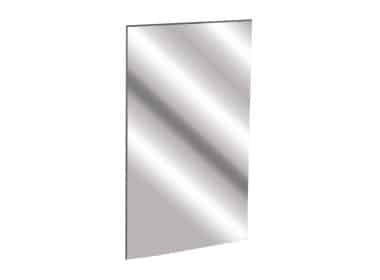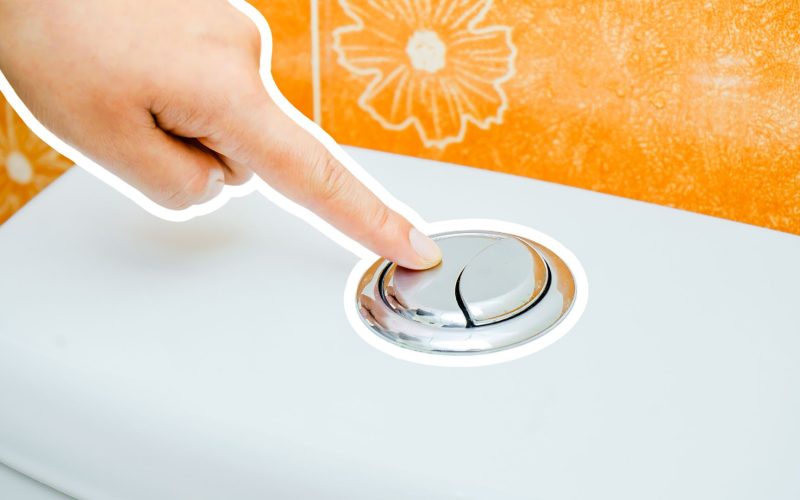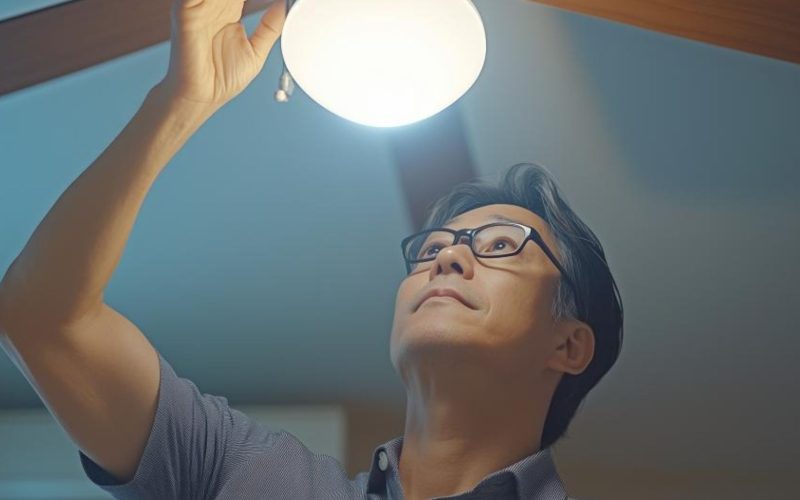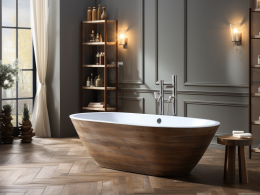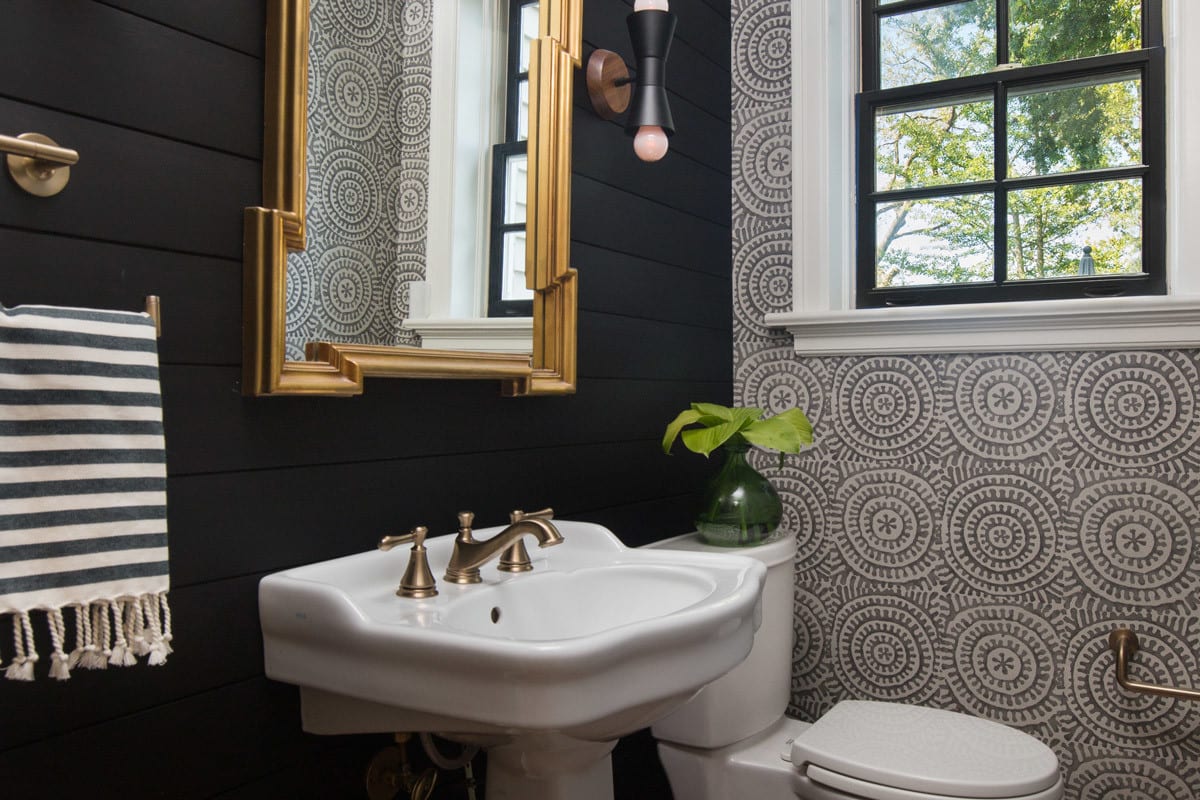Are you struggling with high water bills and want to make your home more eco-friendly?
You’re not alone. Many homeowners are looking for ways to cut water usage without sacrificing convenience.
That’s where dual flush toilets come in.
I’ll show you how dual-flush toilets can help you save water and money while meeting your needs.
This guide will cover everything you need to know about these efficient fixtures.
In this post, you’ll learn what dual flush toilets are and how they work.
We’ll explore the benefits of switching to a dual flush system and how to choose the right one for your home.
I’ll also share tips for installing and maintaining your new fixture and how to troubleshoot common issues.
Let’s dive in and explore how dual-flush toilets can transform your bathroom and your water bill.
History and Development of Dual Flush Toilets
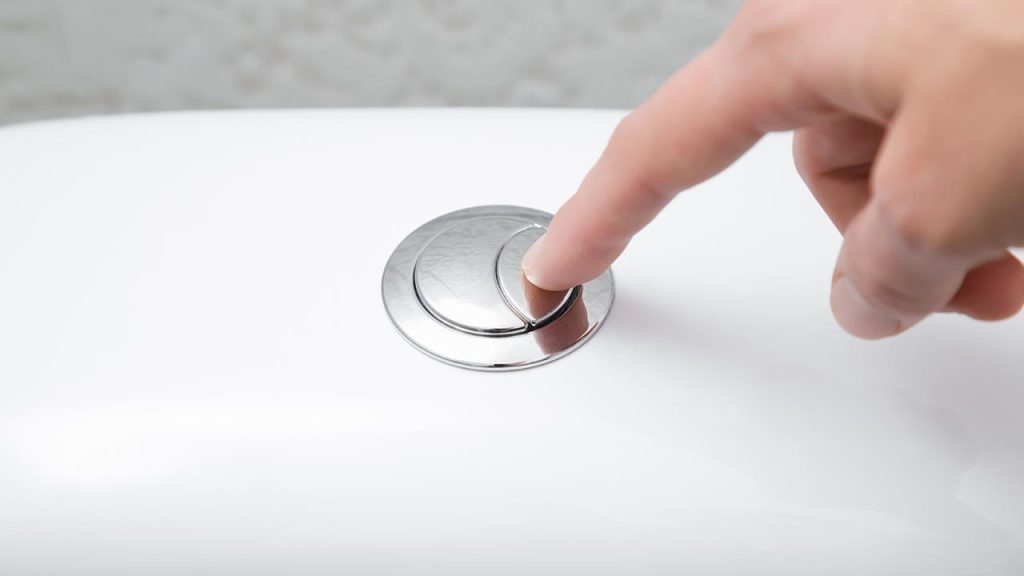
The story of dual flush toilets is a tale of innovation and gradual improvement.
It’s fascinating to see how these water-saving wonders came to be.
Let’s take a trip down memory lane and explore the key moments that shaped the dual-flush toilets we use today.
1. Early Designs by TOTO in 1960
It all started in 1960 with TOTO, a Japanese company known for making bathroom fixtures.
They devised a clever idea – a toilet with two levers and a built-in hand washer.
The goal was simple: use the water from washing your hands to flush the toilet. Pretty smart, right?
But here’s the thing – sometimes, being ahead isn’t always good.
TOTO’s design was so new and different that people weren’t quite ready.
It didn’t catch on in Japan or anywhere else at the time.
2. Development by Caroma in 1980
Fast forward to 1980, and we meet Caroma, an Australian company.
They took the dual flush idea and made it work so people could understand and use it easily.
Their first design used 11 liters for a big flush and 5.5 liters for a small one.
This was a big step towards saving water compared to regular toilets.
Caroma didn’t stop there. In 1994, they made their design even better.
The new version used only 6 liters for a full flush and 3 liters for a half flush.
This was a game-changer for saving water, and people who cared about the environment loved it.
3. Evolution and Adoption in Various Countries
Soon, dual-flush toilets started popping up all over Australia and New Zealand.
The governments even made rules saying new buildings had to use these water-saving toilets.
Other countries, such as Singapore, Sweden, and Israel, where water is precious, have also started using them more.
But it wasn’t all smooth sailing.
In some places, people thought dual flush toilets were too expensive or hard to install.
But as time passed, more people realized that saving water (and money on water bills) in the long run was worth it.
Looking back, we can see how dual flush toilets went from a new idea that didn’t catch on to helping save water worldwide.
It just goes to show that sometimes, good ideas need time to grow and improve before they can make a big
Dual Flush Toilets: Mechanism and Design
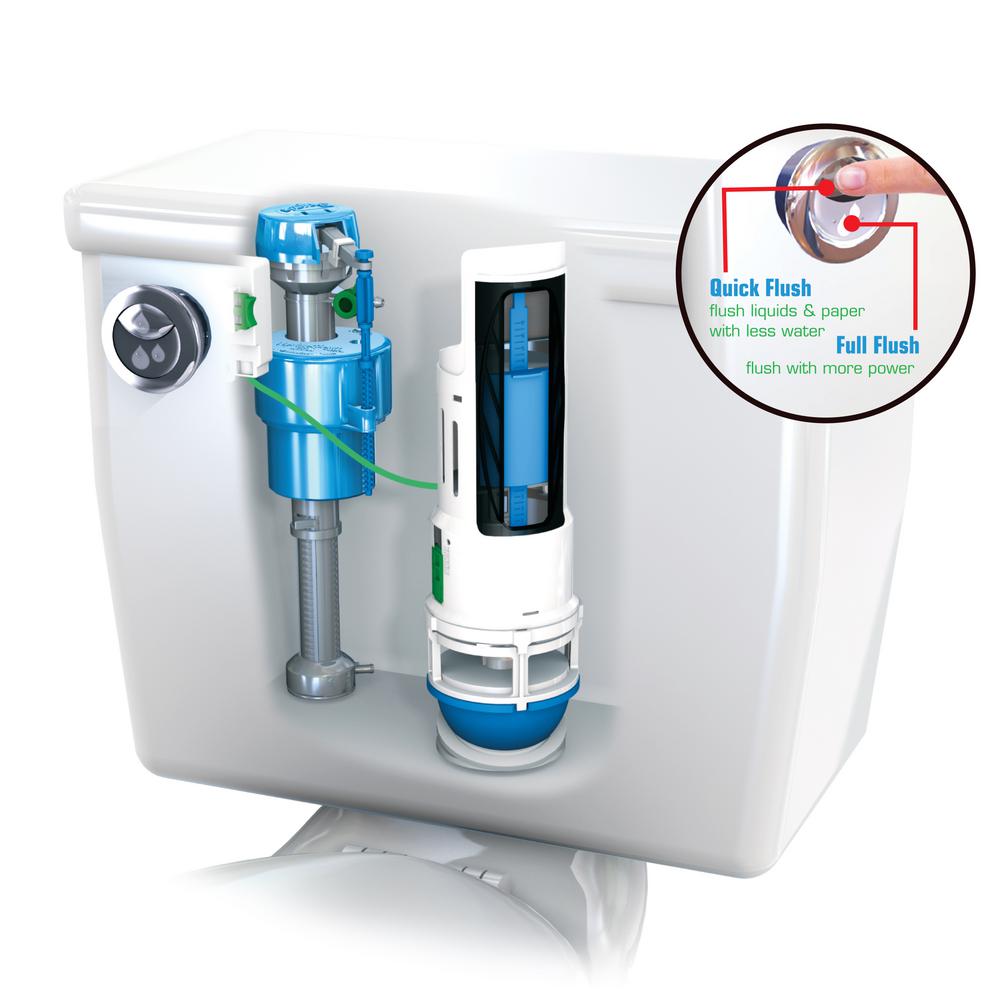
The mechanism and design of dual flush toilets are crucial in understanding how they function and contribute to water conservation.
This section will cover the different types of mechanisms: push-button system, lever-operated dual flush, and tipping bucket cistern.
1. Push-button System
The push-button system is one of the most common mechanisms in dual flush toilets.
It features two buttons on the cistern for different flush volumes.
Functionality
- One button is for a smaller, half flush (e.g., 3 liters), ideal for liquid waste.
- The other button is for a larger, full flush (e.g., 6 liters), suitable for solid waste.
Design Features
- Utilizes gravity to remove waste, reducing water usage.
- Larger 10 cm trapway in the bowl allows for efficient flushing with less water.
2. Lever-Operated Dual Flush
Lever-operated systems use a siphon valve controlled by a lever instead of buttons.
Functionality
- Full flush (≤ 6L) is activated by holding down the lever.
- Half flush (≤ 3L) is activated by releasing the lever immediately after flushing.
Design Features
- Similar to traditional toilets but with added water-saving benefits.
- Less common than push-button systems but still effective.
3. Tipping Bucket Cistern
The tipping bucket cistern is another variant of the dual flush system.
Functionality
- Operates by rotating the lever halfway for a dual flush mode.
- Typically uses 2.5 liters for a half flush and 5 liters for a full flush.
Design Features
- Simple yet efficient design for water conservation.
- Less mechanical complexity compared to other systems.
Understanding the mechanisms and design of dual flush toilets is essential for appreciating their water-saving capabilities.
Whether using a push-button, lever-operated, or tipping bucket system, each design offers unique features contributing to more efficient water use in modern bathrooms.
How Does Dual Flush Toilet System Work?
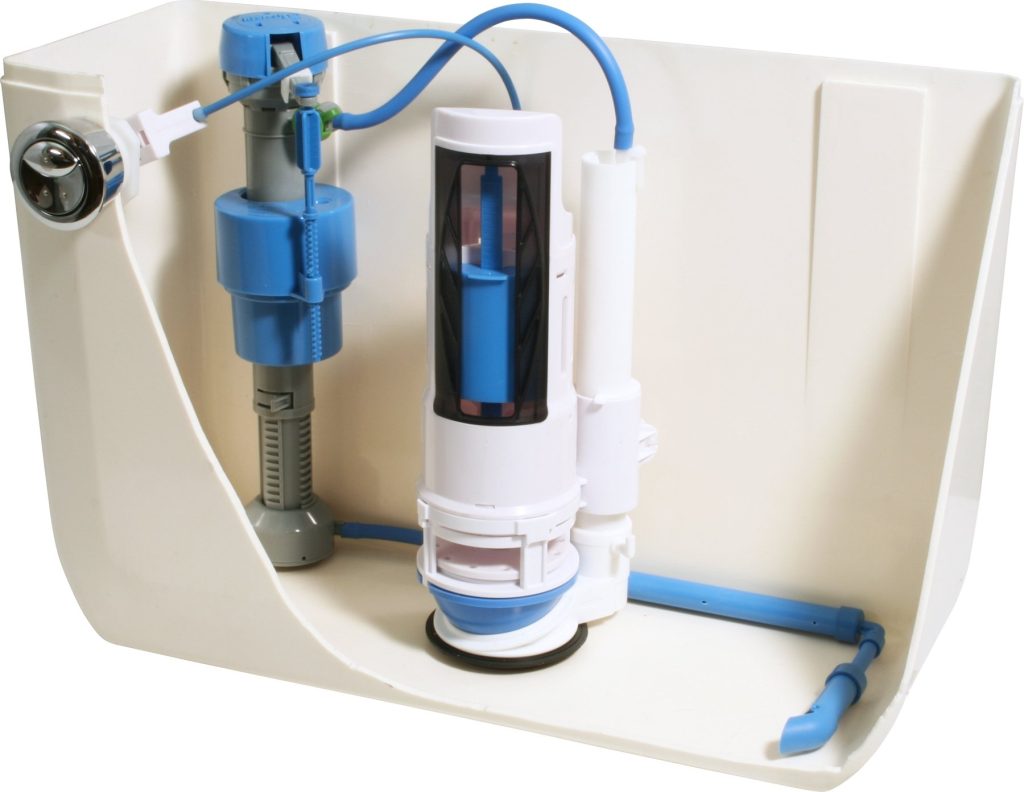
Let’s talk about how dual-flush toilets work. It’s pretty clever!
These toilets have two ways to flush – usually two buttons or sometimes a special lever.
Why? Well, it’s all about using just the right amount of water for different types of waste.
This smart design helps us save water, which is good for the environment and our water bills.
1. Difference Between Liquid and Solid Waste Flush
- Liquid Waste Flush: When you only need to flush liquid waste, use the smaller flush option. This usually uses about 3 liters of water or even less. It’s perfect for those quick trips to the bathroom that happen more often throughout the day.
- Solid Waste Flush: For solid waste, you’ll want to use the larger flush. This one typically uses about 6 liters of water. It’s more water, but ensuring everything gets flushed away properly is necessary.
2. Gravity-Based Operation
- Mechanism: Here’s where it gets interesting. Dual flush toilets use gravity to do the work, not a siphon like older toilets. They also have a bigger hole at the bottom of the bowl (we call it a trap way). This makes it easier for water and waste to go down.
- Advantages: Because of this design, the water level in the bowl is lower than in old-style toilets. And that bigger trap way? This means that these toilets are less likely to get clogged. That’s a big plus!
3. Details on Water Usage for Different Flush Types
- Water Consumption: Remember those numbers I mentioned earlier? About 3 liters for liquid waste and 6 liters for solid waste? Well, compare that to old toilets that could use up to 19 liters every time you flush! That’s a huge difference in water savings.
- Efficiency: Toilet makers keep improving their designs. Some newer models use even less water. Even special labels, like the EPA’s WaterSense, show which toilets efficiently save water.
So, there you have it! That’s how dual-flush toilets work their magic.
Remember, using the right flush for the right job is key.
By doing this, you’re not just saving water—you’re also helping the environment and keeping your water bills down.
It’s amazing how such a simple change in our bathrooms can make such a big difference, right?
Advantages of Dual Toilet Flush
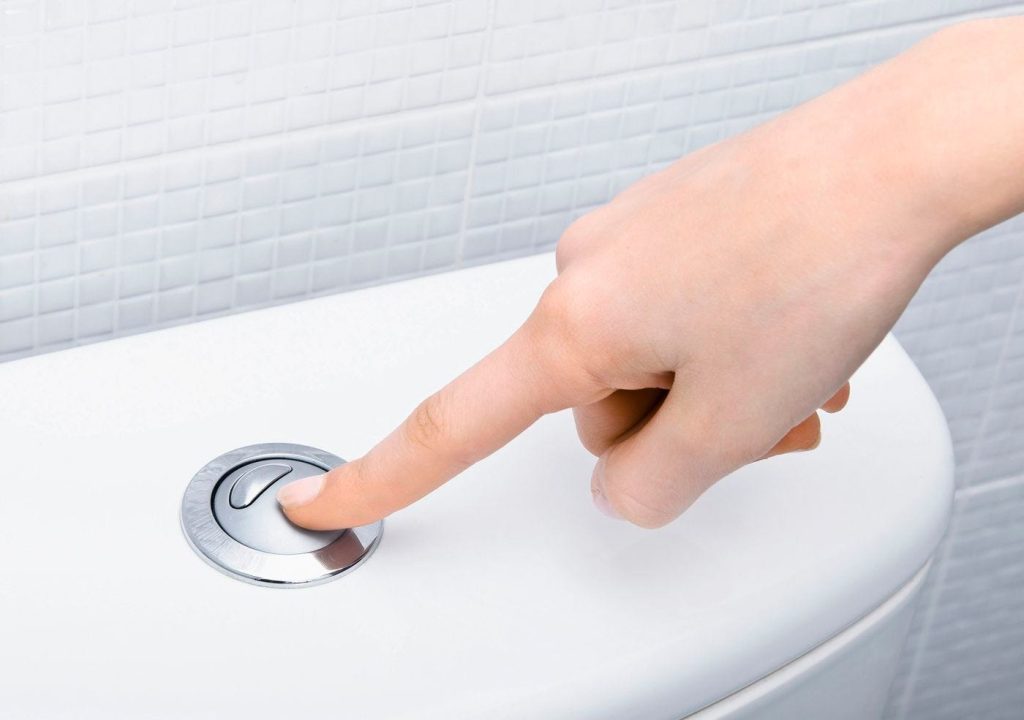
Dual flush toilets offer several significant benefits.
Making them an appealing choice for environmentally conscious homeowners and those looking to save on water bills.
1. Water Conservation and Environmental Benefits
Dual flush toilets use significantly less water compared to traditional toilets.
- A half flush uses about 0.8 to 1.1 gallons of liquid waste.
- A full flush uses about 1.28 to 1.6 gallons of solid waste.
Reduced water usage leads to substantial savings over time.
- Traditional toilets can use up to 5 gallons per flush, making dual flush systems much more efficient.
Environmental impact
- Decreases the demand for municipal water supply.
- Reduces the energy required for water treatment and transportation.
- It helps in preserving natural water resources, which is especially crucial in areas facing water shortages.
2. Cost Savings on Water Bills
Lower water usage translates to reduced water bills.
- Potential savings can be significant over the course of a year.
- Example: A family of four can save thousands of gallons of water annually.
Initial investment in a dual flush toilet can be offset by long-term savings.
- Comparison: Upfront costs are higher than traditional toilets but lead to lower recurring costs.
3. Government Rebates and Incentives
Various regions offer financial incentives to encourage the installation of water-efficient fixtures.
- Rebates are available for toilets with high water efficiency ratings.
Examples of incentives
- Australia’s Target 155 campaign promotes water-saving initiatives.
- US EPA WaterSense program provides rebates for qualifying toilets.
- Local state programs in regions like Victoria, New South Wales, and South Australia.
Steps to claim rebates
- Check eligibility requirements specific to your region.
- Submit proof of purchase and installation of qualifying dual flush toilets.
- Receive rebates, which can significantly reduce the initial cost.
Dual flush toilets are a smart investment for those looking to reduce their environmental footprint and save on water costs.
With government incentives further sweetening the deal, making the switch to a dual flush toilet is both economically and environmentally beneficial.
Disadvantages of Dual Flush Toilets

While dual flush toilets are great for saving water, they’re not perfect.
Let’s talk about some of the drawbacks you might face if you decide to get one.
1. Higher Initial Purchase and Installation Costs
You might notice that dual flush toilets cost more than regular toilets when you’re shopping for one.
This is because they have fancier parts inside to make the two-flush system work.
Plus, you might need to hire a pro to install it, which can add to the cost.
But here’s the thing – even though you pay more initially, you’ll probably save money on your water bills over time.
So it’s like an investment that pays off later.
2. Potential for Leaks and Maintenance Issues
Dual flush toilets can be a bit trickier when it comes to leaks.
They have more parts inside, which means more things can wear out or break.
If a seal or valve stops working right, you might end up with a leak that wastes water instead of saving it.
The good news is that you can avoid many of these problems by taking good care of your toilet and fixing any issues quickly.
If you buy a high-quality toilet, it’ll probably have better parts that last longer, too.
3. Learning Curve for New Users
When you first get a dual flush toilet, it might take some getting used to.
Unlike regular toilets, which have just one way to flush, these have different buttons or levers for different types of waste.
If you’re not used to it, you might use the wrong flush by mistake, which could mean using more water than needed.
Don’t worry – it doesn’t take long to get the hang of it.
Putting up a little sign with instructions can help everyone in your house learn how to use it right.
Additional Considerations
- Installing a dual flush toilet can be a bit more complicated than a regular one, so it might cost more to have it put in.
- If something breaks, the parts you need to fix might be more expensive or harder to find than parts for a regular toilet.
- Because these toilets use less water, you might need to clean the bowl more often to keep it looking nice.
Even with these downsides, dual flush toilets are still a good choice to save water.
It’s all about weighing the costs against the benefits.
Think about how much you might save on water bills and how you’re helping the environment.
That can help you decide if a dual flush toilet is right for you.
Types of Dual Flush Toilets

When it comes to dual flush toilets, you’ve got options!
Let’s explore the different types you can choose from.
This will help you pick the best one for your home.
1. One-Piece vs. Two-Piece Designs
First, let’s talk about one-piece and two-piece designs.
You’ll see These main types when shopping for a dual-flush toilet.
One-Piece Toilets
These toilets look sleek because the tank and bowl are all one unit.
They’re easier to clean since there’s no gap between the tank and the bowl.
These can be great if you have a small bathroom because they’re usually more compact.
The downside? They often cost more because they’re trickier to make.
Two-Piece Toilets
These are the toilets you’re probably used to seeing.
The tank and bowl are separate pieces.
They’re usually cheaper than one-piece toilets and come in many different styles.
Plus, they’re easier to move around when you’re installing them.
The catch is they can be a bit harder to clean around that gap between the tank and bowl.
So, which is better? It depends on what you need.
If you want something easy to clean and don’t mind spending more, go for one piece.
A two-piece might be your best bet if you’re on a budget or want more style options.
2. Retro-Fit Dual Flush Kits
What if you like your current toilet but want the water-saving benefits of a dual flush?
That’s where retrofit dual flush kits come in.
These kits let you turn your regular toilet into a dual-flush toilet without buying a new one.
It’s a great way to save money and still benefit from using less water.
Installing one of these kits is usually pretty easy.
You can often do it yourself if you’re handy.
Here’s a quick rundown of how it usually goes:
- Turn off the water to your toilet.
- Remove the old flush mechanism.
- Install the new dual flush mechanism.
- Adjust everything to fit just right.
- Turn the water back on and test it out.
Remember that while these kits are great, they might not work perfectly with every toilet.
It’s a good idea to check if your toilet is compatible with yours before you buy a kit.
3. Comparison of Various Models
There are lots of dual-flush toilets out there. Here are a few popular ones and what makes them special:
- Model A: Great for saving water, but a bit pricey.
- Model B: Budget-friendly but might not have all the fancy features.
- Model C: Perfect for small bathrooms, very compact design.
When you’re comparing models, think about things like:
- How much water does it use?
- How much does it cost?
- How does it look?
- Is it easy to install and take care of?
Remember, the best toilet for you depends on what you need.
If you’re on a tight budget, Model B might be perfect.
Model C could be your best choice if you have a tiny bathroom.
To sum it up, there are lots of dual-flush toilet options out there.
Whether you go for a sleek one-piece, a traditional two-piece, or even upgrade your current toilet with a kit
You’re making a choice that’s good for your wallet and the environment.
Take your time, think about what you need, and choose the right one.
Conclusion
Dual flush toilets are more than just a bathroom trend – they’re a smart way to save water and money.
We’ve explored their history, their work, and the types available.
From push-button systems to lever-operated models, each design offers unique benefits for water conservation.
While they have some drawbacks, like higher initial costs and potential maintenance issues, the long-term advantages often outweigh these concerns.
Dual flush toilets help reduce water bills and conserve precious resources by using less water for different types of waste.
Whether you’re renovating, building a new home, or just looking to make an eco-friendly change, consider a dual-flush toilet.
It’s a simple switch that can make a big difference.
With the right choice, you’ll be flushing smarter and contributing to a more sustainable future, one flush at a time.




